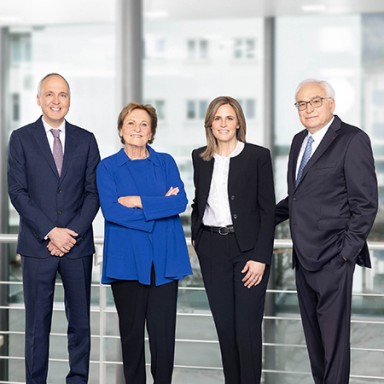Annual report 2022
The Liebherr Group achieved total turnover of €12,589 million in 2022. This represents an increase of € 950 million, or 8.2 %, compared to the previous year.
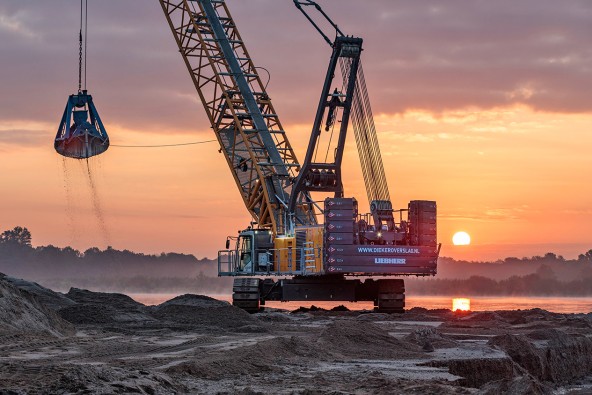
Revenue worldwide € m
Overall economic performance
According to the International Monetary Fund, the global economy grew by 3.4 % in 2022. The main reasons for the noticeable global slowdown in economic growth in the business year were the war in Ukraine, the resulting rise in raw materials and energy prices, and increasing price pressures. These factors also had a negative impact on the inflation rate, which further accelerated due to soaring food and fuel prices. The ongoing Covid-19 pandemic and the associated regional lockdowns also weighed on economic growth, but the global economy nevertheless recorded slight growth in the business year. With growth of 3.9 %, emerging and developing countries grew more than industrialised countries. The developed nations were only able to post an increase of 2.7 %. Economic growth in the USA was just 2.0 %. The eurozone, however, saw growth of 3.5 %, which was slightly above the international average. The volume of international trade increased by 3.5 % according to the World Trade Organisation's autumn forecast. According to the WTO, particular growth impulses came from Africa and the Middle East.
In the 2022 business year, the Liebherr Group achieved increases in turnover, some of them significant, across all product segments with the exception of tower cranes, gear technology and automation systems as well as components. As a result, the record year 2019 was exceeded for the first time. However, difficult business conditions such as increased raw material and energy prices, higher manufacturing costs and ongoing supply chain difficulties also affected the Liebherr Group. The shortage of skilled workers in various sectors was also a challenge.
Liebherr recorded a turnover of €8,561 million in construction and mining machines, representing an increase of 6.9 % on the previous year. This includes the product segments earthmoving, material handling technology, deep foundation machines, mining, mobile and crawler cranes, tower cranes, and concrete technology. In the other product segments – maritime cranes, aerospace and transportation systems, gear technology and automation systems, refrigerators and freezers, components, and hotels – the Group achieved a total turnover of €4,028 million. This represents healthy growth of 11.0 % on the previous year.
Turnover performance by region
Total turnover 12,589 € m
+ 8,2 %+ 950 € m
| % the previous year | € the previous year | ||
|---|---|---|---|
| Asia and Oceania | 1,827 € m | + 0.8 | + 15 m |
| Africa, Near and Middle East | 788 € m | + 37.3 | + 214 m |
| Central and South America | 537 € m | + 29.1 | + 121 m |
| North America | 1,996 € m | + 21.3 | + 351 m |
| Non-EU countries | 1,531 € m | - 0.3 | - 5 m |
| European Union | 5,910 € m | + 4.5 | + 254 m |
In the 2022 business year, the Groupʼs turnover developed positively in almost all sales regions. In the European Union, traditionally Liebherrʼs strongest market, turnover increased slightly. Growth rates varied in the individual EU markets, with business developing particularly well in the Netherlands and Italy. Turnover in non-EU countries showed a negligible decline. North America, in contrast, saw an extremely positive development, which can primarily be attributed to the USA and Canada. Thanks to an increase in Brazil and Panama, Liebherr was also able to achieve a strong increase in Central and South America. The region Africa, Near and Middle East also recorded an encouraging increase, with Saudi Arabia and the United Arab Emirates proving to be particular drivers. Turnover in Asia and Oceania was slightly above the previous yearʼs level.
Net income for the year
The Liebherr Group achieved a net income of €2 million in 2022. The operating result decreased strongly compared to 2021 and the financial result also fell significantly below the previous yearʼs level.
Employees
51,321
+ 1,710
| Employees | Compared to the previous year | ||
|---|---|---|---|
| Asia and Oceania | 4,164 | + 38 | |
| Africa, Near and Middle East | 1,145 | + 90 | |
| Central and South America | 1,988 | + 80 | |
| North America | 2,064 | + 166 | |
| Non-EU countries | 4,764 | - 200 | |
| European Union | 37,196 | + 1,536 |
Its employees are key to the success of the Liebherr Group. Their qualifications, commitment and determination to produce first-class results for the Groupʼs customers mean that they are the ones who decisively shape the company. As a family-run company, Liebherr is an employer with a strong tradition of partnership and teamwork based on reliability, fairness, respect and autonomy.
The number of employees in the Group increased again in the business year. At the end of 2022, Liebherr employed 51,321 people worldwide, an increase of 1,710 or 3.4 %. The European Union saw the largest increase in the number of employees, followed by North America. However, Liebherr also saw an increase in Asia and Oceania, the Africa, Near and Middle East region, as well as in Central and South America. In the non-EU countries, the number declined slightly.
The Group is regarded as an attractive and reliable employer. Liebherr offers its employees exciting professional challenges and opportunities for their passion for fascinating, innovative products and technologies to flourish in the diverse tasks they perform in their day-to-day work. A whole host of opportunities await employees starting their working life, ranging from apprenticeships to dual study to a final thesis or traineeship opportunities.
Sustainability
The Group aspires to generate sustainable value for its employees, customers and suppliers, and for society as a whole. As an independent family-run company with a long-term focus, Liebherr is aware of its responsibilities and is committed to sustainable development. Its products, processes and infrastructure are geared to the minimum possible consumption of resources. The focus in all areas is on safety, efficiency and environmental sustainability. Last year, a large number of the Groupʼs companies worked on projects concerning social, environmental and economic aspects of sustainability. The many activities in these areas will be incorporated into an overall concept for corporate responsibility, which is currently being developed at Group level.
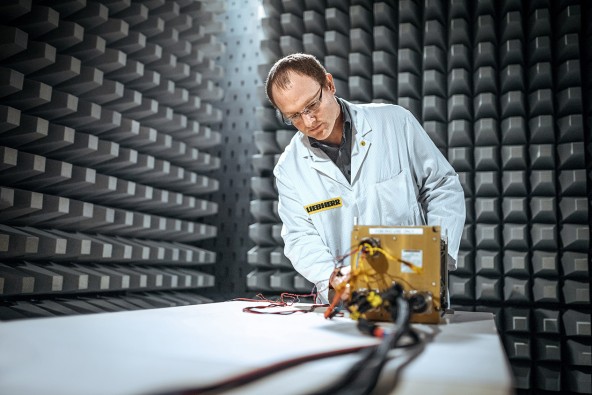
Research and development
As a high-tech company, Liebherr aims to play a major role in advancing technological innovation. Last year, the Group invested € 588 million in research and development activities. A large proportion of this amount went into new product development. In addition, the Group initiated and continued numerous research projects with universities, colleges and research institutes. The Groupʼs research activities continued to focus on digitalisation and alternative drive systems. Another focus was on the topic of autonomy. At the same time, the Group continued to develop existing technologies and add numerous new machines, components and solutions to its product programme.
In 2022, Liebherr continued its work on various alternative drive concepts to further advance product decarbonisation. The Group pursues a technology-neutral approach so it can cover the widest range of applications and product requirements of customers worldwide.
In the business year, Liebherr presented the R 9XX H2, a ground-breaking innovation in crawler excavators. It is powered by Liebherrʼs H966 hydrogen combustion engine and emits almost no CO2 during use on construction sites. The model received the Bauma Innovation Award in the climate protection category. The business year also saw the Group further pursue the use of hydrotreated vegetable oils (HVO) as a renewable energy source. HVO can now power a large proportion of Liebherr construction machines, cranes and mining machines. Liebherr also continued its research into fuel cell systems for the aviation industry. The first of these systems was successfully put into operation during the current business year. The company is making a contribution to the decarbonisation of the aviation industry with this future-oriented technology.
Liebherr has added six new electric drive models to its unplugged range. The unplugged portfolio consists of battery-powered, locally emission-free crawler cranes as well as piling and drilling rigs up to 400 t. The new LTC 1050-3.1E compact crane is equipped with an electric motor as well as a conventional drive. Another new product from Liebherr is the Liduro Power Port (LPO) mobile energy storage system for construction site supply. LPO can operate or charge hybrid or all-electric construction machines and systems.
Digitalisation was another key topic in the business year. The new LICCON3 crane control in the LTM 1110-5.2 and LTM 1100-5.3 models laid the cornerstone for a new, digitalised generation of mobile cranes. In gear technology, LiTool, a design and simulation program for increased tool quality, was further developed. Liebherr implemented various digital solutions for components, including camera monitor systems and all-round vision solutions. The business year saw the start of development of control technology software for the collection and processing of data for concrete technology process optimisation.
The LiReCon teleoperation unit for tower cranes and earthmoving machines is another future project in the field of digitalisation. LiReCon stands for Liebherr Remote Control System and will enable safe and convenient remote crane control. In addition, Liebherr has expanded its mining truck assistance system range to include the Trolley Guidance and Crusher Guidance systems. These innovations provide better operational efficiency and safety.
Following years of research, development and validation at the Liebherr Mining Technology Development Centre in the US, Liebherr Mining is currently in the process of delivering the first deployment of its fully integrated Autonomous Haulage Solution (AHS). The initial fleet of autonomous T 264 will be delivered to complete the final stage of AHS validation within a production environment, scheduled to commence in Australia in 2023.
Liebherr also reached a new milestone in energy efficiency and sustainability with its refrigerators and freezers. For insulation, a vacuum is used in conjunction with perlite, a finely ground lava rock. Perlite is a renewable raw material that can be reused easily. The technology is a world first and enables the production of devices that meet the highest energy standards.
Liebherr continues to work on 3D printed components for the aircraft of tomorrow. The 3D printing process can be used to produce even the most complex components. These are very lightweight, thus increasing the efficiency of the systems.
Investments € m
Investments
The Liebherr Group has traditionally emphasised the importance of continual investments in its production facilities and its global sales and service network. Liebherr invested €863 million last year, increasing investments by €121 million or 16.3 % on the previous year. This was offset by depreciation amounting to €528 million.
The Group expanded its sales and service activities on the French market during the business year and added a new branch to Liebherr Distribution et Services France SAS located in Taverny, near Paris. In the aerospace and transportation systems segment, Liebherr opened a repair workshop for heat exchangers in Singapore and applied for an expansion of the Campsas site near Toulouse (France) to increase the production of heat exchangers there. A large-scale expansion of the Ehingen (Germany) site has begun. As a first step, a new repair shop was opened in Ehingen-Berg. Outsourcing repairs improves the range of services for customers and creates new capacities. All measures are planned to be completed by 2024. In Oberopfingen (Germany), construction work began on a new hydraulic cylinder plant. In the tower cranes segment, Liebherr is also planning to expand the existing plant building at the Pune site (India).
Depreciation € m
In parallel, Liebherr began building a new remanufacturing workshop at the Jakarta site (Indonesia) to increase the reconditioning of used components, thus making an important contribution to resource conservation. At the Telfs site (Austria), Liebherr continued the construction of a new logistics centre. Most of the production material will be stored there in the future. Furthermore, the Group invested heavily in emission-reducing and energy-saving measures at various sites in the business year, such as photovoltaic systems, LEDs as a light source, and continuing efforts to lower in-plant traffic emissions through electric drives and the use of an alternative fuel made from hydrotreated vegetable oils (HVO).
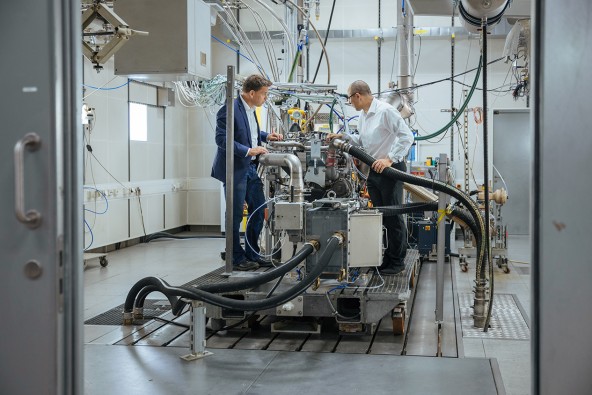
Risk management system and internal control system
In order to ensure that the Groupʼs success continues to be sustainable, opportunities and risks are identified at an early stage for evaluation and control. The Group has a continually optimised risk management procedure in place, and an internal control system to help it meet operational, market-related and legal requirements.
All managers responsible for the risk management and internal control systems used in the individual Group companies are involved in ensuring the integrated recording, analysis and evaluation of risks. Risks are identified and assessed locally in the individual companies, then countermeasures to limit the risks are introduced and the impacts are evaluated.
This localised approach also makes it possible to identify and assess areas of opportunity efficiently. The information gained about market-related and technological developments is used in opportunities management to reach decisions about future areas of business and production processes.
At the corporate level, the current risk situation is regularly reviewed and the effectiveness of the systems and processes is assessed. The internal audit department monitors compliance with Group guidelines and the implementation of the risk management and internal control systems.
Supplementary report
Events of particular significance which occur after the reporting date should be recorded here, along with their expected impact on the Groupʼs assets, financial position and financial performance. There were no events of special significance within the Liebherr Group after the close of the 2022 business year.
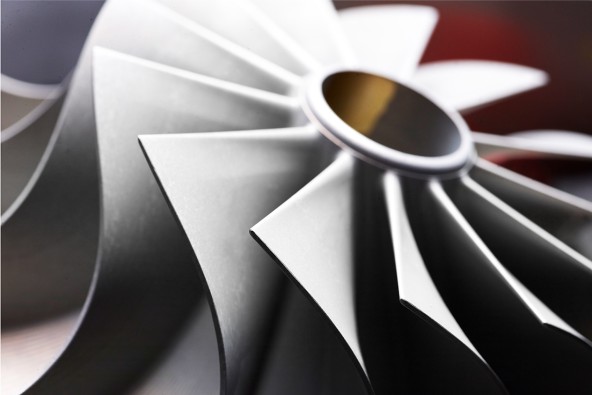
Outlook for 2023
In October 2022, the International Monetary Fund predicted weakened global economic growth of 2.7 % for 2023. This is the weakest forecast since 2001, excluding the global financial crisis at the height of the Covid-19 pandemic. At the beginning of 2023, the forecast was revised slightly upwards to 2.9 %.
According to the International Monetary Fund, there are signs that the global economy will cool down again in 2023, albeit not by as much as initially feared. Nevertheless, inflation is at its highest level in decades, but will fall slightly in 2023 according to forecasts. The global economy is being weighed down by the increased cost of living, the impact of the war in Ukraine and the ongoing Covid-19 pandemic. This is also confirmed by the World Bank.
The Euroconstruct research network indicated growth of 3 % for the European construction industry in 2022. In contrast, a growth rate of just 0.2 % is predicted for 2023. All areas are expected to develop negatively, apart from deep foundation engineering. This is mainly due to lower demand in residential construction. A recovery is not forecast until 2025.
The International Air Transport Association (IATA) expects air traffic to continue recovering in 2023. According to forecasts, the industry could make a profit for the first time since the beginning of the Covid-19 pandemic. Nevertheless, the previously mentioned risks could also have a negative impact on the industry. In 2023, overall air traveller numbers are expected to be around 93 % of 2019 levels.
The year 2023 is marked by uncertainty, especially in material supply and energy prices. However, at the beginning of 2023, the order volume was very healthy, which is why Liebherr is positive about the rest of the year, despite all the challenges.
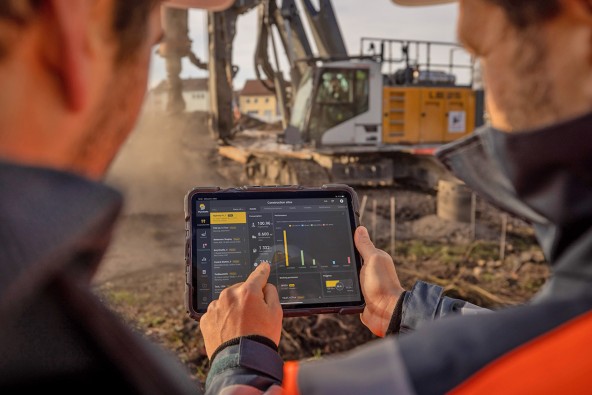
Individual opportunities and risks
To describe individual opportunities and risks, similar types of risks and opportunities have been grouped together. In macroeconomic terms, the decline in increases in the rate of inflation may contribute to a reduction in uncertainty and result in an increase in demand in various industrial sectors in which the Liebherr Group is active. Order intake is developing positively across all product segments.
At the same time, there are macroeconomic uncertainties with regard to how long pandemic-related restrictions will persist, as well as the effects of steep price increases for many goods and services, shortages of certain raw materials and labour, and bottlenecks in various supply chains. It is currently unclear whether and to what extent fiscal and monetary policy measures will ultimately affect the Liebherr Group.
With regard to the war in Ukraine, there is still great uncertainty as to whether and to what extent there will be a gradual easing of conditions, the sanctions will remain in force and a gas shortage, which would result in rationing, can be avoided. Against this background, negative effects on the activities of the Group cannot be ruled out.
In terms of the corresponding risks, the Group faces changes in costs due to the shift in energy prices, which cannot always be compensated for by price indexation.
The chapters on each of the product segments contain detailed reports on relevant opportunities and risks. Market price risks could arise from ongoing business operations, in particular from currency and interest rate fluctuations triggered by monetary policy normalisation measures across the world.
Liebherr monitors these risks continuously and uses appropriate financial instruments to hedge selected transactions. The Group enters into financial transactions only where these are linked to its operational business activity or for hedging. In principle, Liebherr does not conduct transactions of a speculative nature.
The global orientation of the Groupʼs business activities, together with the Groupʼs broadly diversified product base and the risk management system ensure that the relevant risks are kept under control. Based on currently available information, there are no further identifiable risks which could have a substantial detrimental effect on Liebherrʼs assets, financial position and financial performance in the 2023 business year, and threaten the survival of the Group as a whole.

